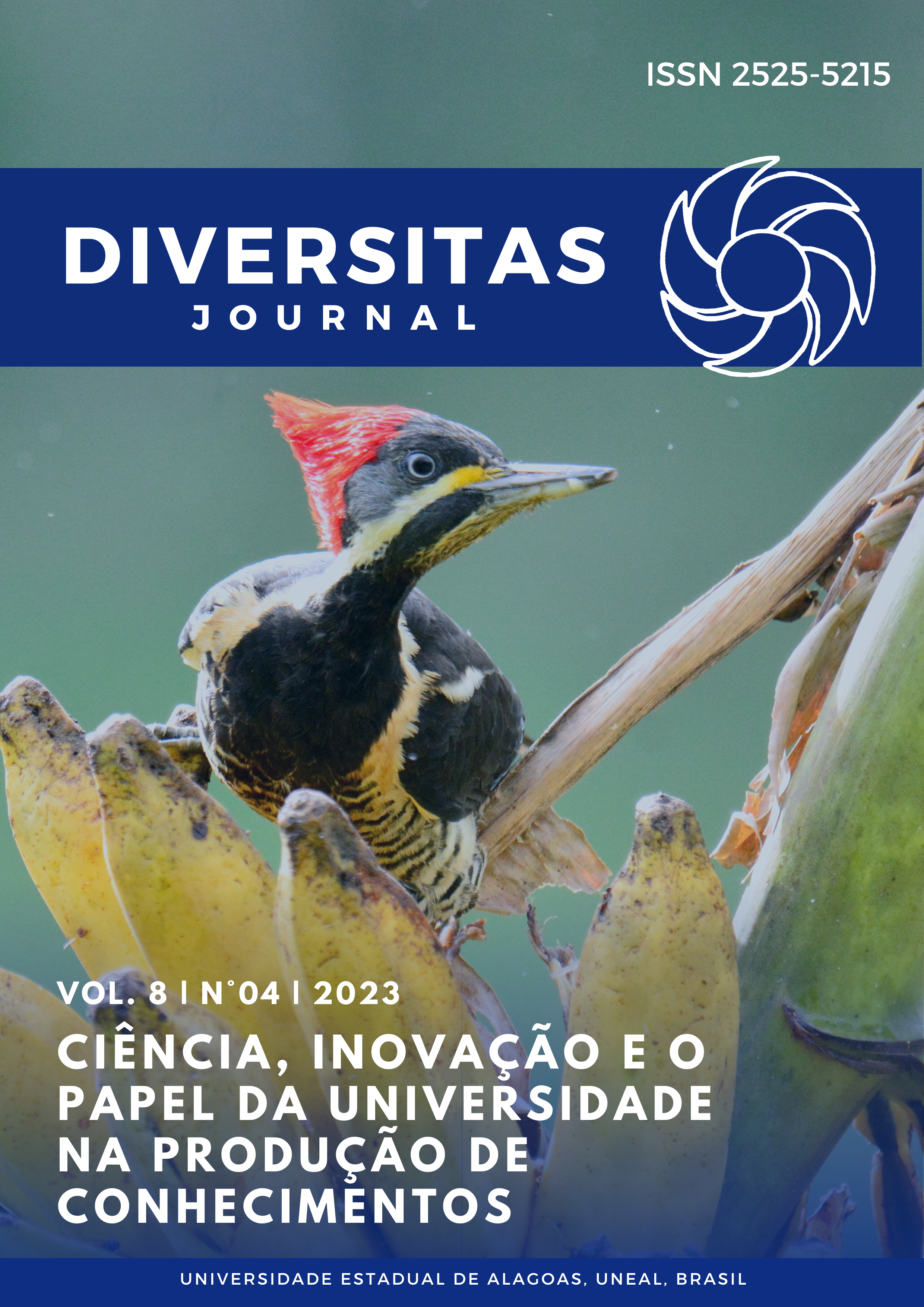O Design e Desenvolvimento de um Gerenciador de Avaliação de Leitura
DOI:
https://doi.org/10.48017/dj.v8i4.2790Palavras-chave:
Software de Avaliação de Leitura, Compreensão de Leitura, Tecnologia EducacionalResumo
Um resultado alarmante do Programa de Avaliação Internacional de Alunos (PISA) de 2018 revelou que as Filipinas ficaram em último lugar entre os outros 79 países que participaram da avaliação. Isso levou o Departamento de Educação a criar programas de reforço para leitura, que infelizmente foram arquivados quando as aulas presenciais foram canceladas devido à pandemia de COVID-19. Portanto, os pesquisadores criaram o Gerenciador de Avaliação de Leitura (RAM) para a continuidade de programas de leitura, como a avaliação dos níveis de leitura dos alunos, mesmo durante o aprendizado remoto. Neste estudo, o RAM foi criado para avaliar virtualmente os níveis de leitura dos alunos, recomendar materiais de leitura compatíveis com o nível e armazenar dados em contas individualizadas. Seguindo o Design de Pesquisade Desenvolvimento Tipo II, o RAM foi projetado e desenvolvido usando uma série de avaliações de necessidades, prototipagem e satisfação do usuário do sistema. Os resultados da Escala de Usabilidade do Sistema (SUS) administrada mostraram que o RAM superou 90-95% dos sistemas de software da indústria, enquanto o Questionário de Usabilidade Pós-Estudo (PSSUQ) relatou uma satisfação do usuário acima da média por parte dos respondente.
Métricas
Referências
Akker, V. (1999). Principles and methods of development research. Retrieved http://www.heybradfords.com/FormativeResearchInstructionalUnit/Van%20der%20Akker%20Ch1.pdf
Alcober, N. (2020, February 11). Pasig schools focus on reading. Retrieved from https://tribune.net.ph/index.php/2020/02/11/pasig-schools-focus-on-reading/
Awabdy, G. W. (2012). Background knowledge and its effect on standardized reading Comprehension Test Performance. Retrieved from https://escholarship.org/content/qt7ph9r3ts/qt7ph9r3ts_noSplash_58f02b04b879be3cf2f9eb63de267952.pdf
Baier, R. J. (2005). Reading Comprehension and Reading Strategies. Retrieved from https://core.ac.uk/download/pdf/5066651.pdf
Biancarosa, G., & Griffiths, G. (2012). Technology tools to support reading in the digital age. Retrieved from https://files.eric.ed.gov/fulltext/EJ996196.pdf
Beins, Bernard C. (2014). APA Style Simplified: Writing in Psychology, Education, Nursing, and Sociology (Wiley Custom Edition). John Wiley and Sons Inc.
Department of Education. (2018). The Philippine informal reading inventory manual 2018. Retrieved from http://www.davaocitydeped.ph/downloads/forms/313-phil-iri-full-package.html
Gutierrez, K. (2015, July 9). The ins and outs of Rapid Prototyping for eLearning. Retrieved from https://www.shiftelearning.com/blog/rapid-prototyping-forelearning#:~:text=Rapid%20Prototyping%20is%20an%20instructional
Ibrahim, A. A. (2016, January 10). Definition Purpose and Procedure of Developmental Research: An Analytical Review. ResearchGate. Retrieved September 30, 2021, from https://www.researchgate.net/publication/312934049_Definition_Purpose_and_Procedure_of_Developmental_Research_An_Analytical_Review.
Kenton, W. (2020, September 21). How Multiple Linear Regression Works. Retrieved December 06, 2020, from https://www.investopedia.com/terms/m/mlr.asp
Keyser, A. (2021). Why is Reading Important. Retrieved from https://www.worksheetcloud.com/blog/why-is-reading-important/
Lethaby, C. (2005, April 14). What is linguistics knowledge? Retrieved from https://rafangel.wordpress.com/2005/04/14/bella/
Lewis, J. (1994). Sample Sizes for Usability Studies: Additional Considerations. Retrieved December 05, 2020, from https://www.researchgate.net/publication/15128047_Sample_Sizes_for_Usability_Studies_Additional_Considerations
Lewis, J. (2002, September). (PDF) Psychometric Evaluation of the PSSUQ Using Data from Five Years of Usability Studies. Retrieved December 06, 2020, from https://www.researchgate.net/publication/220302199
Llego, M. (2019, March 4). Revised Philippine informal reading inventory (Phil-IRI). Retrieved from https://www.teacherph.com/revised-phil-iri/
Mcginnis, D. (2018, December 20). What is the fourth Industrial Revolution? Retrieved from https://www.salesforce.com/blog/2018/12/what-is-the-fourth-industrial-revolution-4IR.html
McRae, S. (2012). Utilizing the Interactive Reading Model in a Continuing Education Course. Retrieved from https://digitalcollections.sit.edu/cgi/viewcontent.cgi?article=1541&context=ipp_collection
Moore, A. L. (n.d.). A research review of cognitive skills, strategies, and interventions for reading comprehension. Retrieved from http://download.learningrx.com/reading-comprehension-research-paper.pdf
Moran, K. (2019, December 1). Usability Testing 101. Retrieved December 05, 2020, from https://www.nngroup.com/articles/usability-testing-101/
Mustaro, P. N. (2007). Structure of storyboard for interactive learning objects development. Learning objects and instructional design, 253-280.
Organisation for Economic Co-operation and Development. (2018). Philippines - OECD. OECD Programme for International Student Assessment (PISA). Retrieved April 19, 2022, from https://www.oecd.org/pisa/publications/PISA2018_CN_PHL.pdf
Peat, J., Mellis, C., Williams, K. and Xuan W. (2002), Health Science Research: A Handbook of Quantitative Methods, London: Sage.
PSSUQ (Post-Study System Usability Questionnaire). (2020, April 02). Retrieved December 06, 2020, from https://uiuxtrend.com/pssuq-post-study-system-usability-questionnaire/
Razi, o., & Grenfell, J. (2012). The impact of linguistic knowledge on learner strategy deployment. Procedia - Social and Behavioral Sciences, 47, 818-822.
Richey, R. (1994). Developmental Research Design Research: The definition and scope. Retrieved from https://eric.ed.gov/?id=ED373753
Richey, R. C., & Nelson, W. A. (2001, August 3). Developmental Research. 42: Developmental research. Retrieved April 19, 2022, from http://members.aect.org/edtech/ed1/42/index.html#:~:text=Developmental%20research%2C%20as%20opposed%20to,127).
Roser, M., & Ortiz-Ospina, E. (2023). Literacy. Retrieved from https://ourworldindata.org/literacy
Rotolo, T. (2017, February 24). SUS and PSSUQ: Quantifying user experiences. TryMyUI Blog. Retrieved April 19, 2022, from https://www.trymyui.com/blog/2017/02/24/sus-pssuq-website-usability-surveys/
Sauro, J. (2018, September 19). 5 Ways to Interpret a SUS Score. Retrieved December 06, 2020, from https://measuringu.com/interpret-sus-score/
Snow, C. (2002). Reading for understanding: Toward an R&D program in reading comprehension.Retrieved from https://www.rand.org/pubs/monograph_reports/
SOAR (Scholastic online reading Assessment. (n.d.). The Best Choice to Measure Reading Comprehension and Progress. Retrieved from https://education.scholastic.ca/category/SRI_READING_INVENTORY
SPSS Inc. Released (2017) Statistical Package for Social Sciences. IBM SPSS Statistician for Windows, Version 20.0
United Nations. (2015). - SDG indicators. United Nations Statistics Division. Retrieved April 19, 2022, from https://unstats.un.org/sdgs/report/2019/goal-04/
Downloads
Publicado
Como Citar
Edição
Seção
Licença
Copyright (c) 2023 Sara Jane Cruz, Julius Meneses

Este trabalho está licenciado sob uma licença Creative Commons Attribution 4.0 International License.
O periodico Diversitas Journal expressa que os artigos são de unica responsabilidade dos Autores, conhecedores da legislação Brasileira e internacional. Os artigos são revisados pelos pares e devem ter o cuidado de avisar da possível incidencia de plagiarismo. Contudo o plagio é uma ação incontestavel dos autores. A Diversitas Journal não publicará artigos com indicios de Plagiarismos. Artigos com plagios serão tratados em conformidade com os procedimentos de plagiarismo COPE.
A violação dos direitos autorais constitui crime, previsto no artigo 184, do Código Penal Brasileiro:
“Art. 184 Violar direitos de autor e os que lhe são conexos: Pena – detenção, de 3 (três) meses a 1 (um) ano, ou multa. § 1o Se a violação consistir em reprodução total ou parcial, com intuito de lucro direto ou indireto, por qualquer meio ou processo, de obra intelectual, interpretação, execução ou fonograma, sem autorização expressa do autor, do artista intérprete ou executante, do produtor, conforme o caso, ou de quem os represente: Pena – reclusão, de 2 (dois) a 4 (quatro) anos, e multa.”


















